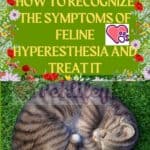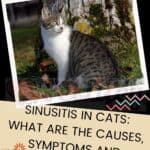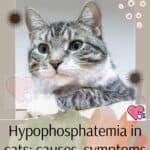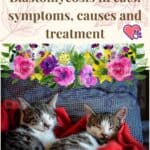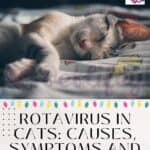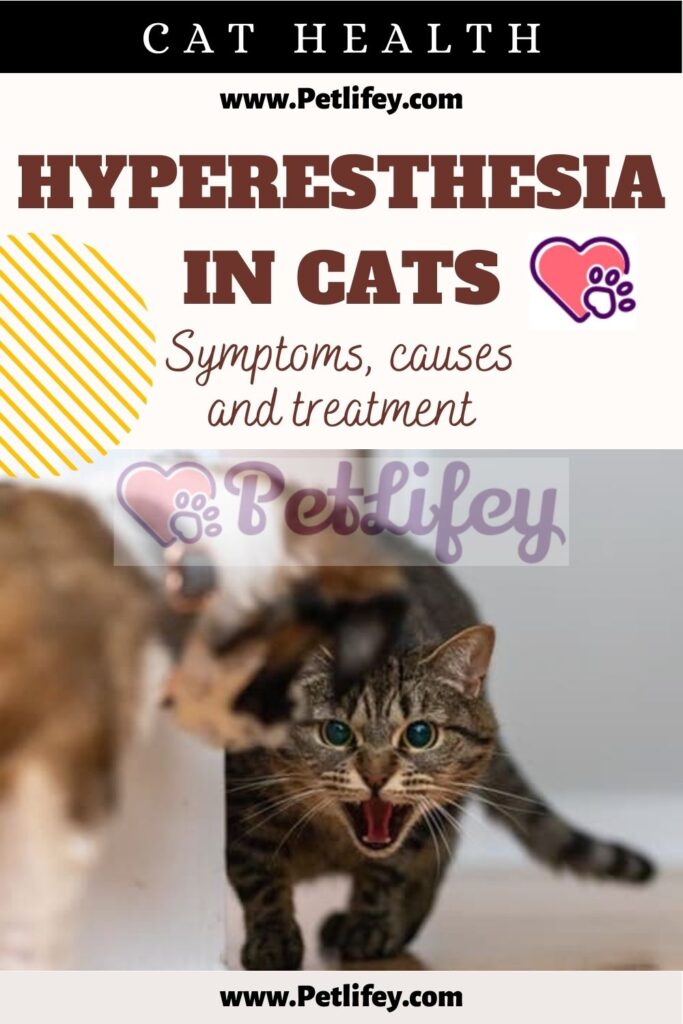
In this article we will find out what cat hyperesthesia is: what are the symptoms of this disease, the causes and treatments to cure it.
Cat hyperesthesia is a syndrome also known as rolling skin syndrome or atypical neurodermatitis. Fortunately, it is not very widespread and known, but it can lead cat to strange behaviors and cause serious inconvenience.
The causes may be of a genetic nature, or the disorder may be induced by neurological abnormalities, or due to stress in the cat. In this article we try to learn more about this rare disease, also trying to identify its main symptoms and possible treatments.
Cat hyperesthesia: definition and symptomalogy
It is a rare disease that affects the neuromuscular system, resulting in abnormal and bizarre behavior in the cat.
The feline is particularly sensitive in the lumbar area: it is an evident cutaneous hypersensitivity, capable of upsetting its behavior. Kitty is calm but suddenly jumps, bites his back, begins to move as if he is hallucinating, running abnormally without any purpose or goal. This is extreme behavior, in some cases it is even possible to see the skin moving. Often the cat’s eyes are wide open, glassy and fixed towards a part of the body, which is observed with insistence and attacked because it is not recognized.
Evaluating each type of anomaly in behavior is crucial for identifying the disorder and the possibility of dealing with it as soon as possible.
So let’s see what are the main symptoms of the disease:
- skin hypersensitivity, with the appearance of the skin on the back being choppy
- excessive salivation with the presence of drool in the mouth
- dilated pupils
- tail movements
- exaggerated and confused vocalizations
- skin spasms
- bites on one part of the body
- licking of the back, tail and hind legs
- aggression towards objects and people
- disorientation, with uncontrolled urination and defecation
Initially, the signs may be vague and not so extreme, with even varying intensity of symptoms from one episode to another, but the movement of the skin and particular meowing should prompt medical attention. The crises are periodic (even once a month), they occur more frequently in the morning and in the evening, with a duration that varies from a few seconds to a few minutes.
During crises, the feline does not respond to the calls of the owner and the solicitations of the environment and can hardly be interrupted in its actions.
Hyperesthesia in cats: the causes
The causes of this disease in felines are still unknown: it is considered a compulsive disorder, perhaps linked to anxiety and stress in the cat and it is possible that it has a genetic basis. In fact, pure breeds such as the Abyssinian, the Burmese or the Himalayan seem to have a predisposition for this syndrome, as do hyperactive or epileptic cats.
The triggering causes can be different and very personal, based on the character and life experience of the cat, if we consider the case of stressful situations for the animal (a move, a new member of the family, a bereavement or an abandonment).
Other theories essentially make it a neurological problem: it would seem that animals affected by this pathology show a greater sensitivity of the nerve cells found in the skin. Consequently, even the slightest touch or the mere presence of an insect can make the cat react as if the stimulus were more intense, with discomfort or pain.
How to make the diagnosis
Before talking about behavioral disorder, it is always necessary to subject our cat to a check-up to understand his state of health.
The symptoms of feline hyperesthesia could indeed be confused with those of other conditions and diseases, such as:
- Stress
- Neurological disorders
- Insect bites
- Scabies
- Flea dermatitis
- Food allergy
- Skin infections.
In order to rule out these problems, the best solution is to contact a veterinarian, who will carry out a series of targeted tests for a clear and precise diagnosis. Generally the doctor will do a blood test, a complete neurological exam, trichograms and skin scrapings. Finally, CT or MRI are important diagnostic imaging tests, useful for ruling out neurological processes.
Treatments for feline hyperesthesia
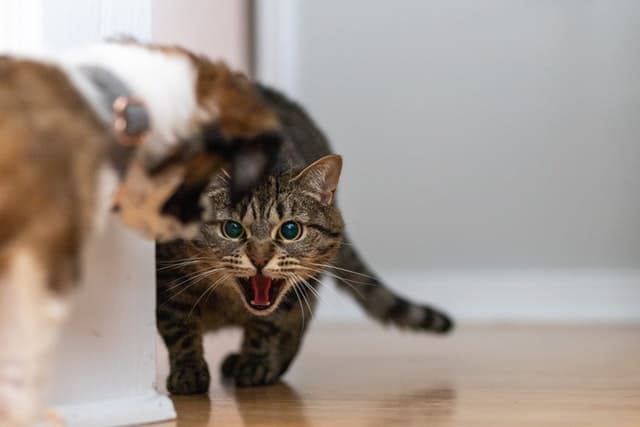
Being a behavioral disorder, it is best to consult a behavioral veterinarian, that is, an expert on feline behavior. The doctor could in fact understand which aspects of our cat’s daily life are the cause of his state of anxiety and give indications to intervene directly on the source of stress.
To facilitate his psychic recovery, we could for example:
- make sure that the surrounding environment is suitable and does not cause further discomfort (location and right number of bowls and litter);
- provide him with fun structures for climbing, jumping and predating
- let him leave the house, to discover and experience the outside world
- prevent all forms of stress and try to intervene as little as possible during crises, so as not to increase the anxiety of the cat and avoid reinforcing those behaviors through unusual attention
Once these countermeasures have been adopted on the correct management of the environment, the veterinarian will decide whether to prescribe a medical therapy based on specific drugs, such as antidepressants or serotonin reuptake inhibitors.
In addition to these drugs that can act on the brain to reduce the sensitivity of the animal, it is also useful to resort to a balanced diet.
A good suggestion is to buy pheromone diffusers for synthetic cats, i.e. those feline substances produced to mark the territory, so that they spread throughout the house and that the cat, perceiving them, can feel calmer and more confident. .
Since this is mainly a psychological problem, it is important to follow the instructions of the veterinarian who specializes in behavioral problems, who will be able to offer a personalized and effective solution after analyzing cat’s situation.

